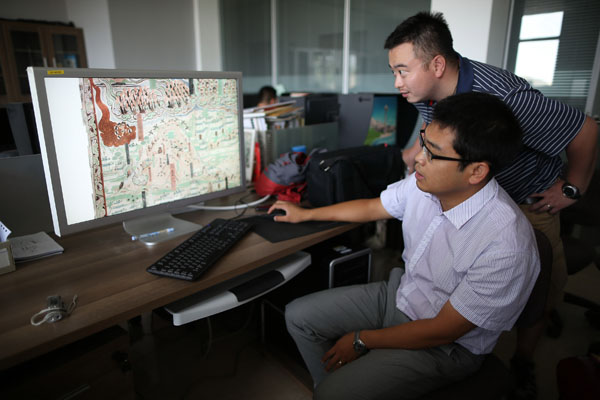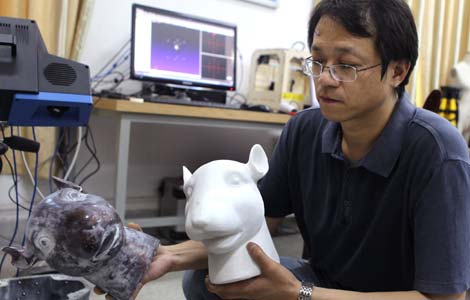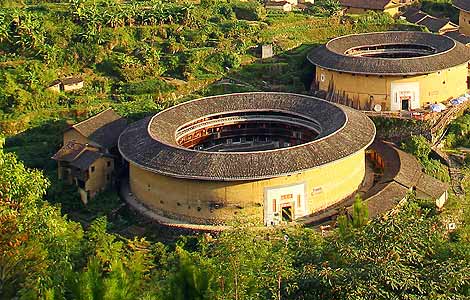Holding onto history
Updated: 2013-08-14 00:24
By Liu Wei (China Daily)
|
|||||||||
In the field
A photography team usually includes a photographer, three assistants and a quality supervisor who ensures the right focus and size.
They divide the murals into small pieces, each 31 by 47 cm and take photos of them. According to Sun, one square meter of mural needs about 60-70 photos.
 |
|
Workers from Dunhuang Academy's digital center examine murals on computer.Chen Xi / For China Daily |
Once the photos have been taken, there is a long, drawn-out process to piece them together using a computer. Sun says 688-square-meter Cave 61 took two and a half months to photograph and about seven months to piece together on the computer.
The cooperation with Northwestern University ended in 2003. Yet the academy has not stopped improving the technology and digitization process. The tracks used to only be available in one size, now the digital center develops tracks of three different widths to suit different caves. The cameras used to only work with regular light, but now only cold light can be allowed to protect the murals.
The conservation work was greatly enhanced in 2011 when Microsoft Research Asia donated a video camera with a resolution of 1.3 billion pixels, to the academy. The two institutions started to develop the camera in 2010.
The academy divides the caves into four categories according to cultural importance. Sun's team expects to digitize all the 147 A-list caves by 2015.
The digitization is a time-consuming project, but it is urgent, too. The contradiction bothers Sun and his team members.
"We would love to digitize the murals as soon as possible, especially when we see the effects of the destructive earthquake in 2008 in the neighboring Sichuan province," Sun says. "But to accelerate the project means having more people in the cave at the same time, which harms the fragile murals, too."

 'Despicable' minions upset Depp's 'Lone Ranger' at box office
'Despicable' minions upset Depp's 'Lone Ranger' at box office
 'Taken 2' grabs movie box office crown
'Taken 2' grabs movie box office crown
 Rihanna's 'Diamonds' tops UK pop chart
Rihanna's 'Diamonds' tops UK pop chart
 Fans get look at vintage Rolling Stones
Fans get look at vintage Rolling Stones
 Celebrities attend Power of Women event
Celebrities attend Power of Women event
 Ang Lee breaks 'every rule' to make unlikely new Life of Pi film
Ang Lee breaks 'every rule' to make unlikely new Life of Pi film
 Rihanna almost thrown out of nightclub
Rihanna almost thrown out of nightclub
 'Dark Knight' wins weekend box office
'Dark Knight' wins weekend box office
Most Viewed
Editor's Picks

|

|

|

|

|

|
Today's Top News
ROK launches 4th 1,800-ton submarine
Kennedy effect - symbolic or positive?
'Leftover women' face tough choices in seeking love
Dutch Prince Friso dies after 2012 avalanche
Academy will turn a Hilton into a dorm for Chinese
Brazil puts off bidding on bullet train
US to examine intelligence collection methods
Economists cautious about China's recovery
US Weekly

|

|





